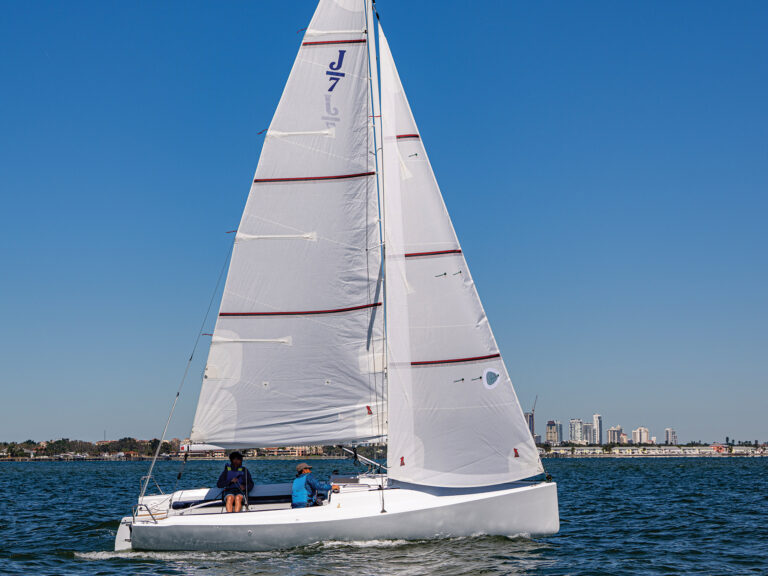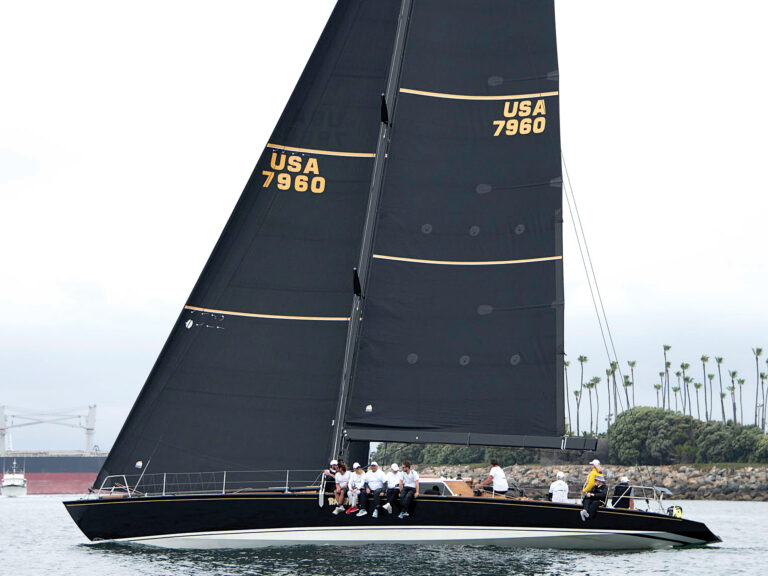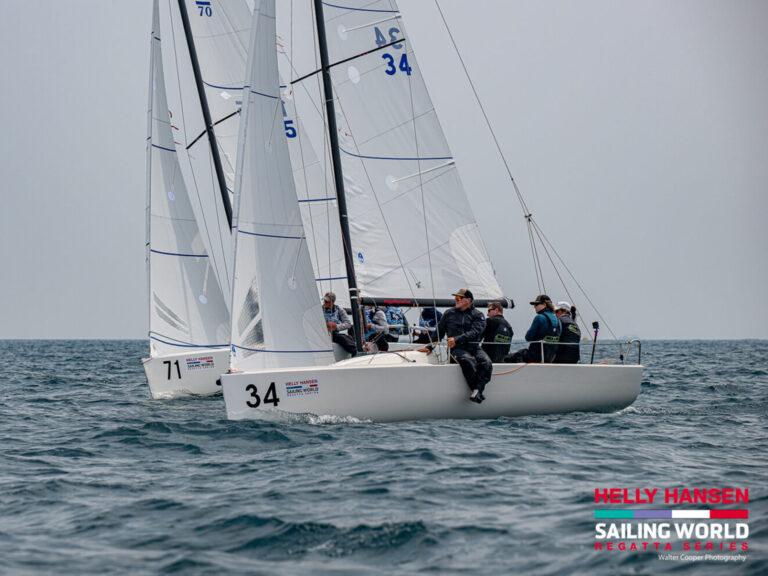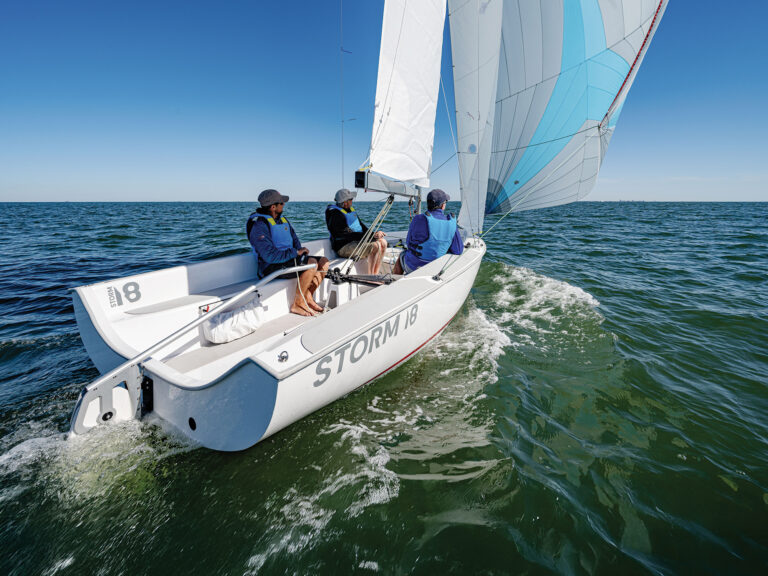
I’ve recently become quite attached to the America’s Cup. While I’ve always viewed it as one of sailing’s premier events, along with the Olympics and the Whitbread or Volvo Ocean Race, I never truly appreciated the Cup until I spent the last nine weeks in Auckland. From close range, it’s a highly addictive blend of science, athleticism, intrigue, personality, and luck. I quickly understood why sailors like Russell Coutts, Dennis Conner, and Peter Gilmour have spent so much of their lives chasing the Auld Mug.
So when Coutts, pharmaceutical billionaire Ernesto Bertarelli, and the rest of the Alinghi crew trounced Team New Zealand, I began to quietly worry about the future of this great regatta. Everyone in Auckland knew the event would change, probably significantly, for the next defense. I fretted that Coutts, a forward-thinking professional sailor, and Bertarelli, a savvy and aggressive businessman, would craft something they felt was a marked improvement, but also cost the event some of its charm. This isnt a contest which gets by on shear adrenaline–the last three Americas Cups, all 5-0 victories, havent won any awards for excitement or drama. The quirks of sailing in general and the Americas Cup, as maddening as they can be, are part of the reason it stands out in a world of made-for-TV sports. While listening to Coutts and Alinghi executive director Michel Bonnefous early last week, however, most of my fears melted away. The next Cup will certainly be different, but it should be an improved event. One that the sailing community will spend more time applauding then defending or decrying and one that will be worthy of the money and effort spent by syndicates to win it.
Now, I did say MOST of my fears. As preordained as it was when Alinghi won, the complete trashing of the nationality rules is a disappointment. The old “residency” system was a farce, one that cost syndicates lots of money and didnt have much of an upside. But at least it required sailors and designers to develop some connection to the country they represented and vice versa. Under the new system, a sailor could win the Cup for a country and not know what that countrys main airport looked like until he or she arrived for the victory celebration. And it wont be long before someone takes Bertarellis plan one step further and fields a sailing squad with no national representatives on the sailing squad. As a syndicate Alinghi may have been 25 percent Swiss, but on the water it was still the best team money could buy. Coutts and Bonnefous defended the decision to dispose of the nationality rules by claiming that the contest was always one between yacht clubs, a tradition they have maintained; and that this system will provide the highest level of competition and create the best possible environment for professional sailors all of nations. But most recreational enthusiasts know the Cup, or knew it, as a “friendly contest between nations.” As long as I can remember, the teams have been referenced by national flag first, with yacht club affiliation a distant fourth to team name and syndicate chief. Its unfortunate that part of this regatta has all but been tossed out the window.
Other than that, its hard to fault Alinghis plan. The rules on design information should prevent a repeat of the miserable experience known as Reeves-gate. The old rule was virtually impossible to police–OneWorld got caught in large part because it fessed up–counterproductive to the events image as the leading edge of sailing technology, and unsafe–Oracle/BMW Racing lost two keels because they werent privy to the design information for the AmericaOne boats. The new regulations will also allow fledging syndicates a better chance of being competitive in their first campaign as they can purchase some key design info from current of defunct syndicates and hit the ground running. It will put more of a burden on the contracts between individuals and syndicates; dont be surprised to see a few breech of contract suits filed down the road. But at least the Americas Cup Arbitration Panel wont get bogged down investigating allegations and meting out justice, thatll be reserved largely for normal courts of law.
|
|
| |
|

|
| |
| Stuart Streuli|
| |
|
|
| |
| In winning the final race, SUI-64 showed that it was undoubtably the fastest boat in Auckland. Potential challengers will have to get to that level and then improve, quickly.* * *|
| |
|
|
|
The reconfiguring of the event administration is also a positive step, highlighted by the appointment of a independent event organizer and the neutral management clause. While the independent race committee is getting a lot of praise, I dont see that as such a big deal. Royal New Zealand Yacht Squadron PRO Harold Bennett was justified in most of his postponement decisions. There were two days I felt he was wrong, but understandably so–the Hauraki Gulf isnt an easy place to run races. The large majority of the days skipped because of weather wouldve produced either light-air drifters or demolition derbies, neither of which do sailing any favors. Baseball and golf dont get criticized for rain delays. Why should sailing feel so self-conscious about waiting for appropriate wind conditions? At least an independent PRO will prevent the press from filling the newspapers and airwaves with conspiracy stories. That will be an improvement.
The schedule is by far my favorite enhancement. Like most of the people present at the press conference, I was salivating over the prospect of 10 to 20 ACC boats charging off the line in a fleet race that actually meant something. The 12-Meter Worlds off Fremantle prior to the 1987 Americas Cup produced some stunning photos and the ACC fleet regattas–possibly one a year for the next four years–should be equally as photogenic and exciting. These will also give syndicates a good chance to gauge their progress, test new innovations, and compare their crew work to the rest of the fleet, all of which should make for a more competitive Louis Vuitton Cup (if the name remains, which is very questionable) and Americas Cup. The fact that the regattas will count for base placement or challenger cup seedings or both will ensure that teams put their best boats and crews on the water. No sandbagging allowed.
There are plenty of other small improvements. The group weather data gathering service will ensure that its science and not money that wins that battle. One smart meteorologist with an innovative algorithm could beat the most well-funded program, something that never wouldve happened in Auckland, where the most productive weather teams had nine RIBs, a dozen people, and multimillion dollar budgets. The allocation of at least a portion of the event profits to the challengers is also a nice gesture, though I doubt itll make much of a dent in the expected $80 million budget required for a competitive challenge, and the common unveiling day prior to the first race of the challenger series will at least give the public something to look at ashore during the early rounds. Boats maybe female in gender, but they dont look good in skirts.
The Cup has always benefited from a change in venue. If the vision of Coutts and Bertarelli is fully realized, however, the 32nd Americas Cup will be an improvement for more reasons than just the change of address.









